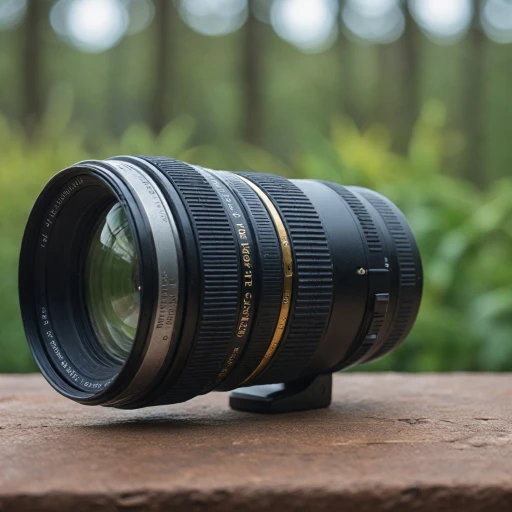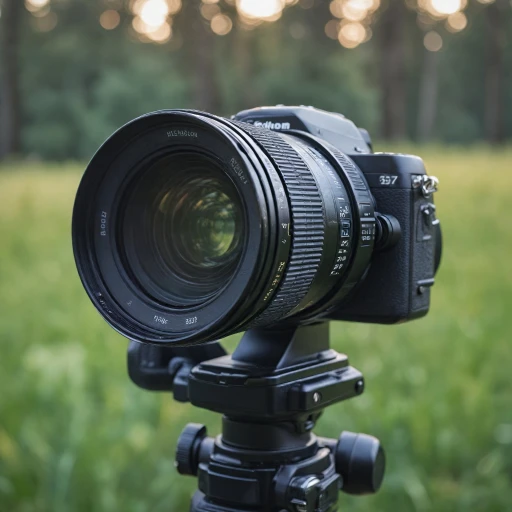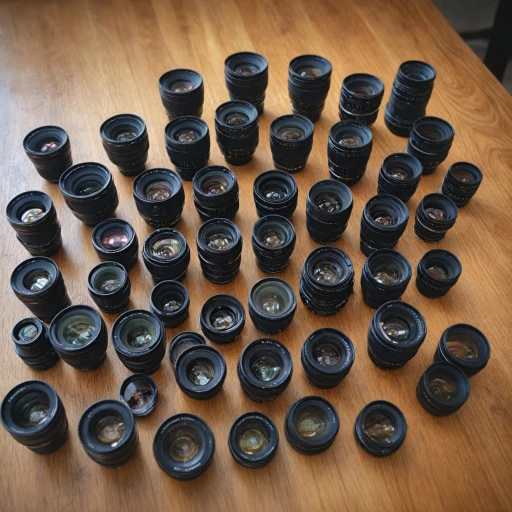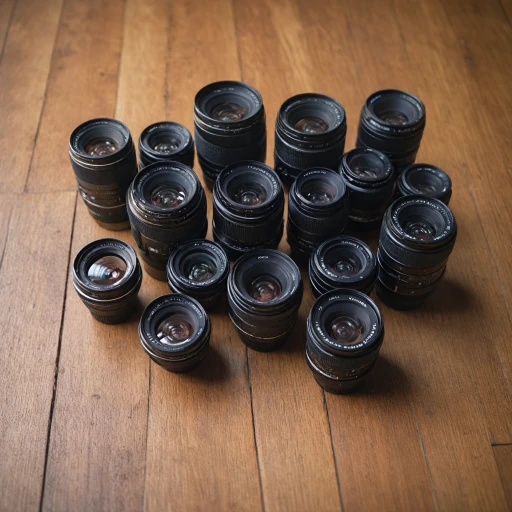
Understanding CFast Card Readers
Decoding the Basics of a CFast Card Reader
When diving into the world of digital photography, understanding the plethora of accessories available can significantly enhance your experience. One key accessory is the CFast card reader—a critical tool for professional photographers who strive for efficiency and speed.
A CFast card reader, often referred to as a reader or adapter, is designed to access the pro-level CFast memory cards used extensively in high-end digital cameras. These cards aren't your run-of-the-mill memory cards but are engineered for high-speed data transfer, typically surpassing speeds of 500 MBps. This makes them ideal for photographers who need to quickly move high-resolution images and video files.
Unlike traditional card readers, a CFast card reader often includes multiple options such as USB gen compatibility, providing dual card capabilities, or even integrating with reader usb connections. This flexibility ensures a seamless transfer of data from the camera to other devices, making it a top choice for those who demand performance and reliability.
It's important to note that selecting the best CFast reader can be pivotal to maximizing its potential. In context, the precise USB speed card compatibility and series cfast memory expansion features can greatly influence how your digital experience unfolds, particularly if using a series cfast card in professional scenarios.
If you're curious how these devices stack against other storage solutions, consider exploring some insights on choosing the right storage cards for different camera models.
Benefits of Using a CFast Card Reader
Unlocking the Advantages of High-Speed Access
Using a CFast card reader can significantly improve the experience and efficiency of handling digital media, particularly for professional photographers and videographers. These readers are designed specifically to manage the demands of CFast memory cards, which offer higher data transfer speeds compared to traditional SD cards. Their ability to deliver high-speed performance makes them an essential component in any workflow that prioritizes quick access to files.Efficiency and Quick Turnaround
A quality CFast card reader provides rapid transfer speeds, often reaching several Gbps, and allows for swift offloading of data from memory cards to your computer. This capability is vital when working with large files or when a quick turnaround is required, such as during photo shoots or film productions. The fast access provided by these card readers ensures that you can seamlessly manage large volumes of data without any delay.Compatibility and Versatility
CFast card readers often come with various connectivity options, such as USB and USB-C ports, ensuring compatibility with a wide range of devices. This flexibility allows users to easily integrate their CFast reader into their current setup, whether it's a desktop, laptop, or other digital devices. Some models also offer dual card slots, accommodating additional card types like SD or UHS cards, adding a layer of versatility to your data management toolkit.Enhanced Workflow Integration
Choosing the best option among card readers can enhance workflow efficiency. Many pro card readers come with the option for USB-powered operation, offering portability and ease of use, especially for professionals on the go. The superior speed provided by these card readers opens a window to faster editing and post-production processes, ultimately enhancing overall productivity. In-depth knowledge of CFast card reader benefits not only helps you select the right tools for your needs but also ensures maximum performance. If you're using devices like the Sony A7V, selecting the optimal memory card is crucial, and understanding these benefits can make a significant difference in your digital endeavors. For more on choosing the best memory cards for specific cameras like the Sony A7V, you can explore further here.Choosing the Right CFast Card Reader for Your Needs
Factors to Consider When Selecting Your CFast Card Reader
Choosing the right CFast card reader involves evaluating various factors that will ensure compatibility and performance with your digital camera. Below are some key considerations to help you make an informed choice:- Compatibility with Your Camera: First and foremost, ensure that the CFast card reader is compatible with your camera's specific model and the CFast memory cards you plan to use. Checking compatibility will prevent connectivity and performance issues.
- Interface and Speed: The interface of the card reader is crucial, as it affects data transfer speeds. Opt for USB 3.1 Gen 2 or higher to maximize the high speed transfer capabilities, which can go up to 10 Gbps. This will significantly improve the efficiency of transferring large files or series of images.
- Portability and Design: Consider the design and size of the reader. If you're frequently on the go, a compact, USB-powered option can be beneficial. Light and portable designs will ensure convenience without sacrificing performance.
- Dual Functionality: Some advanced card readers offer dual card slots, supporting both CFast and other card types like SD UHS-II. This all-in-one functionality can be invaluable for photographers using multiple types of memory cards.
- Build Quality and Durability: Look for card readers built with durable materials to withstand daily wear and tear. A well-constructed reader not only ensures longevity but also safely handles your high-speed memory cards.
- Price and Additional Offers: Weigh the price against the features offered. Opt for reputed brands that offer excellent performance, and don't forget to check for any "free returns" offers for added purchasing security.
How to Use a CFast Card Reader with Your Digital Camera
Getting Started with Your CFast Card Reader
Using a CFast card reader with your digital camera can seem daunting, but it can actually be a smooth process if you follow the right steps. Here's a concise guide to help you navigate this.Before you start, ensure you have all necessary components: a CFast card reader, the CFast cards, and a USB connection to your computer. It’s essential to have a compatible reader that supports USB Gen for optimal speed and performance matching your camera's capability.
Step-by-Step Process
- Connect Your Reader USB: Plug your CFast reader into your computer using a USB-powered connection. It's preferable to use a USB port that supports high speed (10 Gbps or more) for seamless data transfer.
- Insert CFast Memory Card: Ensure your CFast memory card is correctly inserted into the reader card slot, aligning the pins and ensuring the card is fully seated.
- Data Transfer: Once connected, your computer should recognize the card. This opens window for you to explore the card contents. You can now freely drag and drop files between your computer and the card.
- Safely Eject: Before removing the card, always ensure it’s safely ejected from your system to prevent data corruption. Use the computer's 'eject' function to initiate this process.
Using a Dual Pro Card Reader
If you're using a dual reader pro series device, it might support both CFast and UHS cards simultaneously. This allows for versatility in transferring files from different memory cards without switching devices.
Troubleshooting Connection Issues
In some instances, your system might not recognize the CFast card reader instantly. Common solutions include checking the USB connection, ensuring the card is seated properly, and updating your system drivers. If problems persist, consulting the card reader's manual or contacting support might be your best bet.
Adapting to using a CFast card reader efficiently can significantly enhance your workflow and speed up the data transfer process, especially for high-speed memory cards like CFast UHS or Series CFast. This guidance aims to make the process as hassle-free and intuitive as possible.
Maximizing Performance with Your CFast Card Reader
Enhancing Transfer Efficiency
Maximizing performance with your CFast card reader involves prioritizing transfer efficiency. Ensure your card reader supports high-speed USB Gen interfaces, such as USB 3.2 or later, which can deliver data rates of up to 10 Gbps or more. This capability helps move large volumes of data swiftly from your CFast cards to your computer, saving you time and increasing your productivity.Select Appropriate Adapters
Using the right adapter is critical to optimize the performance of your CFast reader. If your computer lacks a native CFast card slot, a USB-powered adapter can provide the necessary interface. Look for an adapter that matches your USB specifications and supports both single and dual slot functionality for CFast cards, allowing simultaneous transfers of multiple memory cards.Regular Updates and Maintenance
To ensure smooth operation, regularly update the firmware of your CFast card reader if applicable. Firmware updates can fix bugs, enhance speed, and add new features. Keep your reader clean to avoid dust accumulation, which can hinder connection points and reduce the reader’s lifespan. Maintain the reader and cards stored in dry, cool environments for longevity.Invest in Quality and Compatibility
Invest in readers from well-established brands known for quality and reliability. This can prevent future complications and ensure support for the latest technology advancements. Opt for card readers designed to handle high-speed data, particularly if you are working with files that demand enhanced transfer speeds like 4K videos or RAW image formats. Maximizing performance with your CFast reader isn't just about speed. It's about ensuring that your tools are reliable, updated, and compatible with your workflow needs. By selecting the best components and keeping your equipment in top condition, you can make the most out of your digital photography experience.Common Challenges and Solutions with CFast Card Readers
Troubleshooting Your CFast Card Reader
Using a CFast card reader with your digital camera can significantly enhance your workflow, but it’s not without its issues. Here are some common challenges you might face along with practical solutions to keep your setup running smoothly.
Connection Issues
One frequent problem users encounter is the card reader failing to connect with their device. Ensure that the reader USB is properly plugged into a functioning port. If the issue persists, try using another USB-powered port or cable, as sometimes, the problem might stem from a faulty adapter.
Slow Transfer Speeds
If you experience unexpectedly slow data transfer rates, consider upgrading to a high-speed USB Gen reader. This ensures that you can take full advantage of the top speed that your memory cards, such as CFast UHS, are capable of delivering. Additionally, check if your memory cards are properly seated in the reader as any misalignment can hinder performance.
Compatibility Concerns
Ensure that you're using a card reader compatible with your specific memory card format. Although most modern readers support a wide range of card types, such as dual cards and CFast cards, it’s always a good idea to double-check. This helps prevent any errors that could arise from incompatibility issues.
Corrupted Files
Occasionally, you may encounter corrupted files during transfer. To minimize this risk, always safely eject your series CFast card or card reader before physically removing it. This simple habit can save you the headache of data loss and ensure your files remain intact.
Maintaining Top Performance
Regularly update your reader CFast firmware and software to the latest versions to take advantage of enhancements and bug fixes. This not only helps maintain optimal performance but also opens windows for improved functionality and better speed card operations, whether you are a pro or hobbyist.
For additional support, taking advantage of free returns options upon purchase can also provide peace of mind in case of persistent hardware issues. Additionally, seeking out trusted reviews and buying from reputable sources ensures reliability in the long run.












